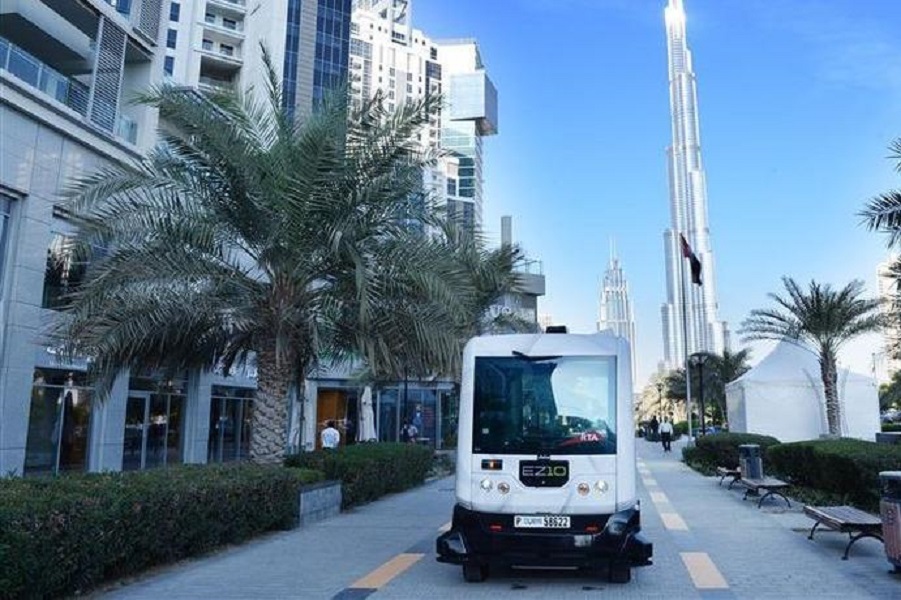New driverless systems to be trialed in Dubai from next year
By Aliheydar_Rzayev Monday, 30 October 2017 3:35 PM

The National -- Driver-less cars that run seamlessly with pedestrian crossings will be trialed in Downtown Dubai as the emirate races towards an autonomous transport future.
The interface between traffic signals and autonomous vehicles will be tested on Sheikh Mohammed bin Rashid Boulevard, with a driverless test car passing through the three intersections between the Dubai Mall and a parking area.
Hussein Al Banna, executive director of traffic at Dubai's Roads and Transport Authority, confirmed that a pilot project would run in 2018 on the Boulevard.
The prospect of hundreds of thousands of driverless journeys on the roads of Dubai was laid out as the International Road Federation got under way at World Trade Centre on Sunday.
More than 200 speakers will cover subjects such as transit, smart cities, partnerships and finance under the theme ‘Mobility Solutions for the 21st Century’.
Alongside plans for driverless cars and flying taxis, strategies being worked out for automated cars that sync directly with traffic signals and a high-tech integrated command centre based on artificial intelligence that will cut response time to emergencies.
This is part of the emirate’s broader ambition for 25 per cent of all journeys to be driverless by 2030.
The RTA estimates that its self-driving transport strategy will result in an annual benefit to the economy of Dh22billion, due to improved productivity, a decrease in pollution, increase in public transport efficiency and an improvement of road safety, said Mattar Al Al Tayer, its director general.
The focus on automated vehicles will result in a reduction of transportation costs by 45 per cent, improve road safety by 12 per cent, reduce the pressure on parking by 50 per cent and drastically cut the emission of gasses, he said.
“Our aim is that Dubai should be a model for future cities with technology, integration of all modes of transportation and a main control and command centre that will operate using artificial intelligence to give real time information and reduce the response time of emergency teams.”
Mr Al Tayer said following Sheikh Mohammed bin Rashid’s call to use 3D printing technology, the transport organisation would print spare parts of the metro, sections of the ticket vending machines and ticket gates of the metro system next year.
Adhering to the Vice-President and Prime Minister of the UAE’s challenge to integrate use of 3D printing, it would be integrated in multi-storey car parks and bus stations in 2018 and 2019 and for foot overbridges in 2021, he said.
Smart pedestrian signals would be introduced numbering 15 in 2018 and 19 in 2019 to allow for continuous traffic flow by sensing pedestrians at a traffic signal. Sensors built into the roads will effectively control movement by gauging both the movement of vehicles and pedestrians.
A driverless electric shuttle EZ 10 was unveiled last year on a trial basis by the RTA to ferry passengers on the Boulevard. The shuttle travelled at a speed of 10kmph and ran on electrically powered engines.
The emirate’s investment in public transport has saved $34billion in time and fuel from 2006 to 2016, with the share of people using mass transit systems rising from 6 per cent a year after the RTA was established to 16 per cent last year.




























Add new comment